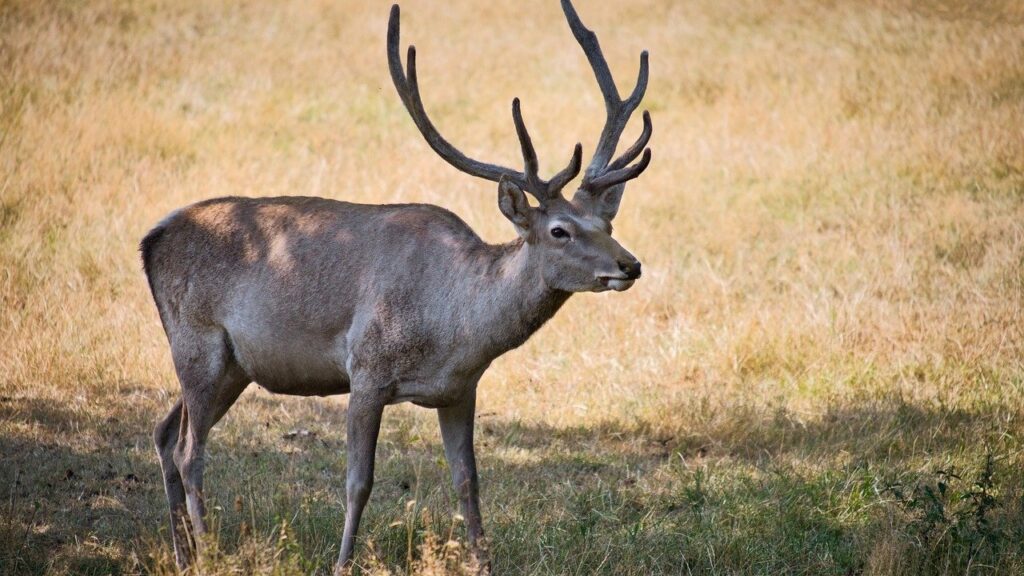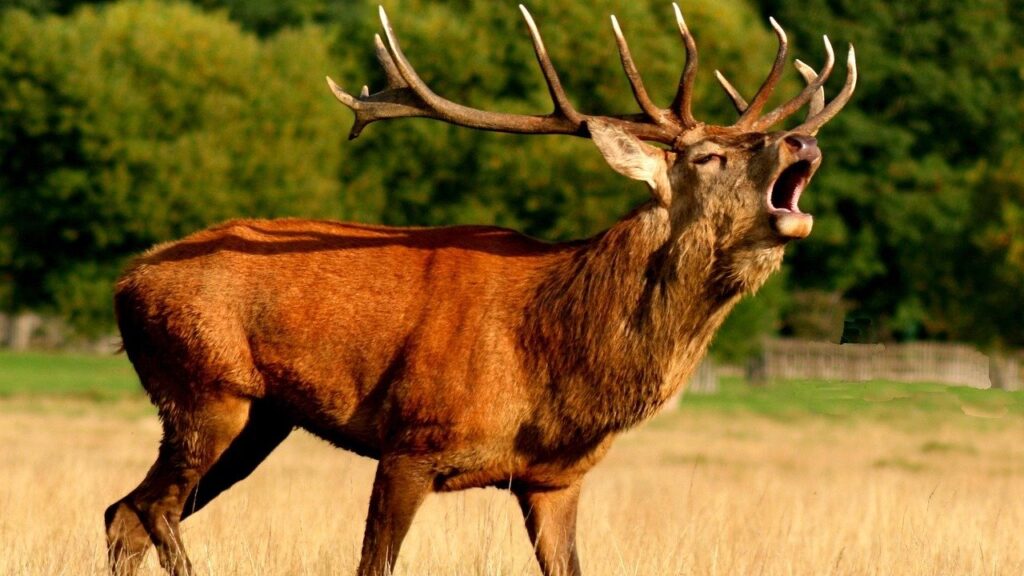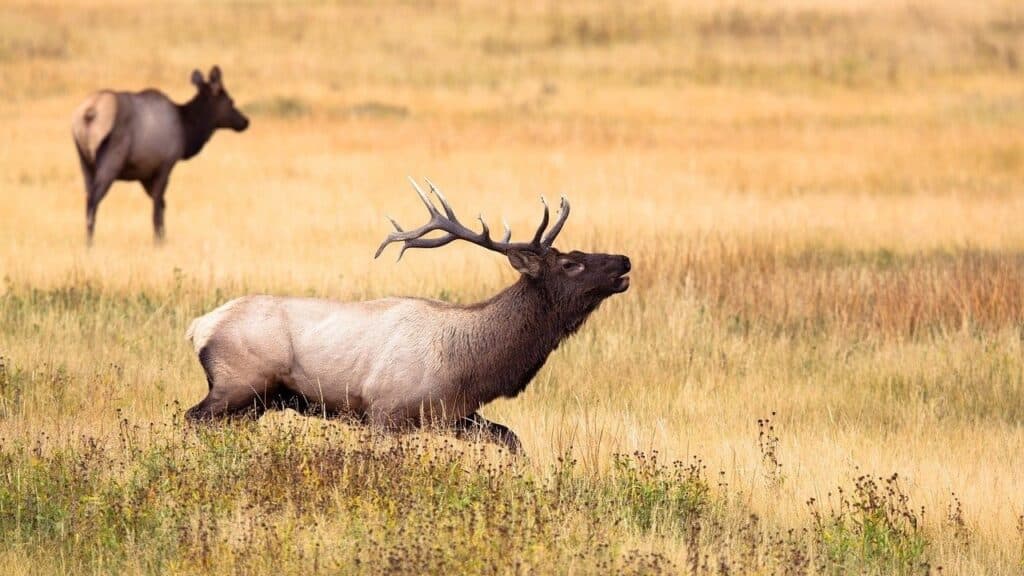Deer hunting is a sport that takes patience and an understanding of the area you are in. If you are planning to hunt for the first time, it’s imperative to know a little more about how to find deer in the woods.
What You Will Need
- A map of the land where you have access to hunt.
- Warm Clothes with a mix of blaze orange and camouflage depending on your state’s rules and regulations for hunting.
- Rubber Boots if possible because they do not carry any scents.
- Optional – binoculars to make it easier to zoom in on anything.
- Optional – affordable trail cameras to help make your scouting even easier.
How to Find Deer in the Woods
To find deer, you must be quiet, camouflaged, and on high alert. You are looking for the slightest bit of movement when spotting deer. It could be just the flicker of the tail or a quick movement of an ear.
If you’re new at this or looking for some new strategies, we have outlined a few steps to help you find more deer this hunting season.
Study the Map
Get your hands on a topographic map of the location that you have hunting access to. Deer often take the path of least resistance and travel through the lowest section of ridgelines, called saddles. You can use a topo map to easily identify the saddles.
Here is an article on How to Read Topographic Maps for Deer Hunting to get you started with map reading. You can also watch this short video.
Another great resource to use is aerial photography from Google Earth or any drone footage you have access to. Deer have patterns, so knowing the geography will make it easier to locate them. But it can be difficult to understand what you are looking at. So here is a video on how to use aerial photos to find deer.
Once you’ve taken a look at the topography of the area, it’s time to get your boots on the ground. The more often you walk the land, the easier it will be to spot clues.
Part of the hunt is knowing what to look for when you’re out. A few things you should be able to recognize include deer scat, the plants that they eat, and what the animals look like. Their droppings will be small pellets usually in a clump together.
Bucks also mark their territory by digging in the ground and rubbing their antlers on the trees. Spotting those marks on the trees is a surefire sign that you’re in a good spot.
You can watch this short video to learn about common deer signs and what those signs mean.
When you find these things, you are getting closer to understanding their daily patterns. If you have some of the Best Trail Cameras Under 200, you can set them up in different locations to get an even clearer picture of where the deer spend their time.
Identify Food and Water Sources
Deer eat acorns, leaves, shoots, twigs, and stems. Depending on the season, they also appreciate some fruit or vegetables. If you locate these items that look like they’ve been torn off, you have found a feeding spot. White Oak acorns are some of the best food for deers, so if you aren’t having luck finding evidence – try looking for White Oak trees.
Identify Bedding Locations
Hollows and ditches are the perfect places for deer to stay hidden away from view. Look especially on southward facing slopes because they look for warm places to rest.
There will also be more deer droppings near the bedding locations so keep an eye out for the little pellets.
Select Your Hunting Spot (or Two)
Once you have located their feeding areas and their bedding areas, it will be much easier to spot them moving between the two. Remember, deer have patterns and will continue to visit the same spots.
Using the information gathered from the maps and walking the land, you should look for a spot that is along their path where they may be easier to spot.
Now that you have your location, it’s time to set an alarm. Deer are most active in the hours around sunrise and sunset. Give yourself plenty of time to get up and be in place. Setting up your spot in advance will help when you are trying to navigate in the darker hours of the morning.
It’s a good idea to have a backup spot or two. If you spend a few days in the same spot and don’t see any movement, then it’s time to relocate.
Wait and Watch
Everything in nature grows towards the sun, so look for any horizontal lines in the brush. They could easily be a body or the head of a deer. Watch for those tiny movements like the wiggle of an ear. It’s good to have your binoculars ready in case you need to inspect something a little closer.
This video will help you learn some strategies for glassing the terrain to find deer.
The biggest bucks are also the most elusive, so you will need to exercise patience.
Famous bowhunter Fred Bear said, “Don’t step on anything you can step over.” Staying quiet is essential to spotting deer in the woods. They have many muscles in their ears to be able to move them around and their sense of hearing is fantastic. If a deer hears you, they will not return to the spot for a few hours.
Finding deer in the woods can be challenging if you don’t know how to find deer in the woods. They are quiet, fast and they have the advantage of calling the woods home. I hope this information will help you plan your hunt this season and for years to come.
Our brains and ability to research and understand gives us the advantage as humans, so it’s important to have a plan and take the time to learn. The more you learn about the land, the more luck you will have to locate deer. Use technology and information to have more success.
References and Further Reading
- How to Find Deer in the Woods (7 Simple Steps)
- Tips for Hunting the Deer in the Woods
- 5 Effective Steps to Find Deer
Last Updated on April 15, 2025 by Marty Prokop






